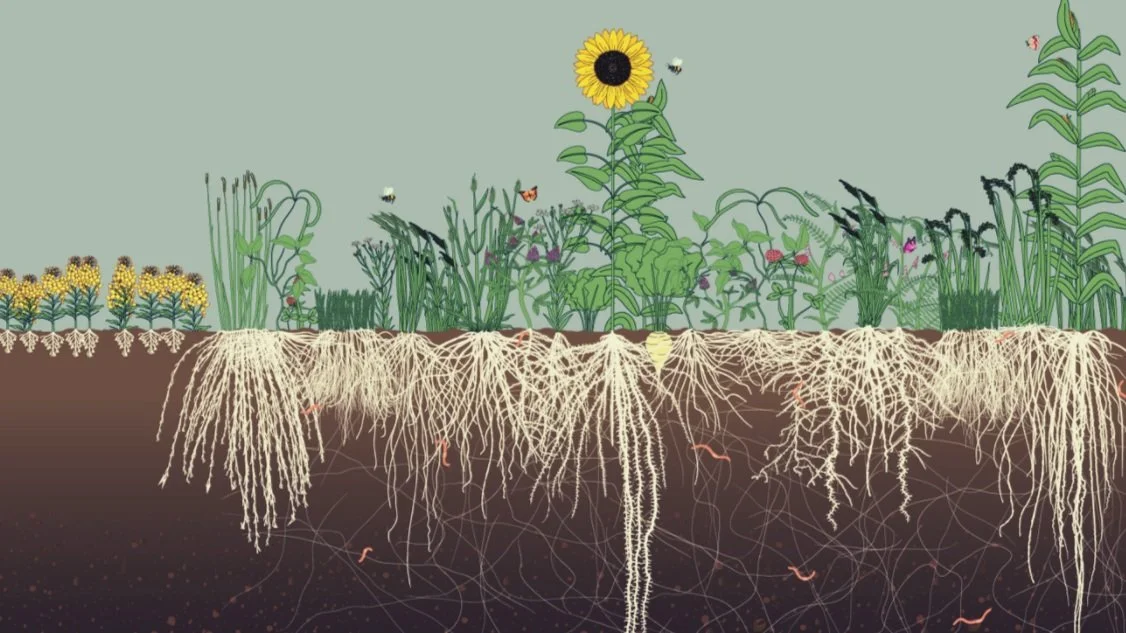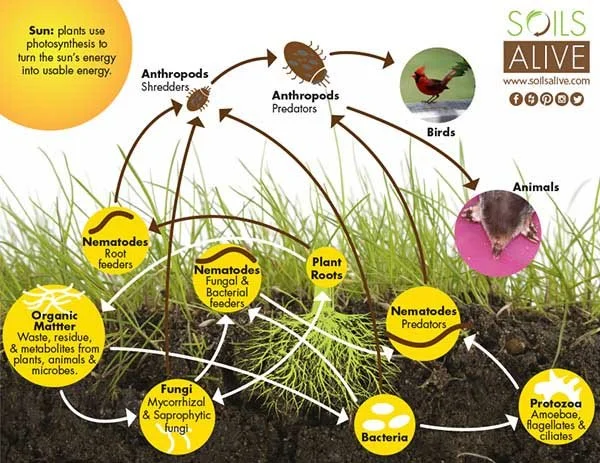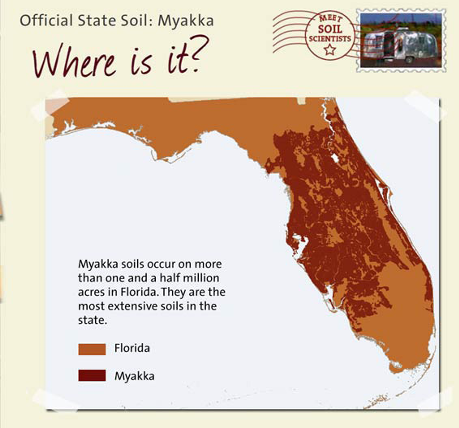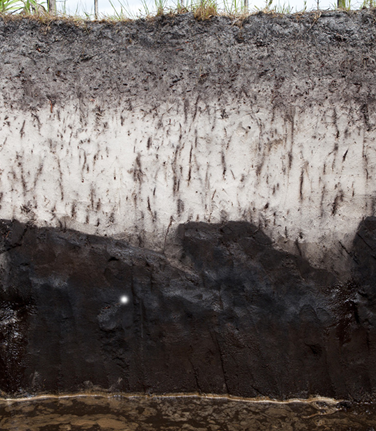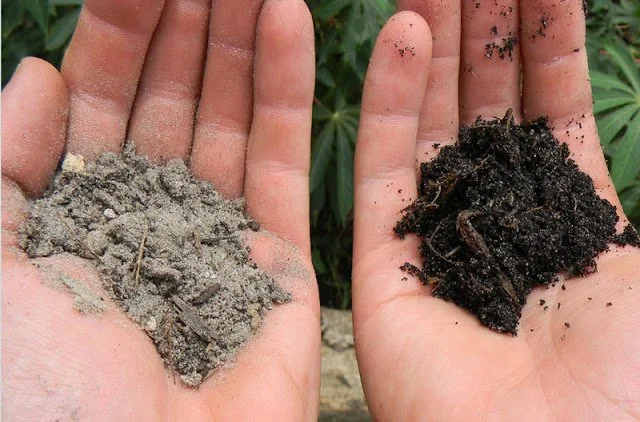SOIL AND THE SOIL FOOD WEB IN YOUR LANDSCAPE
Image credit: Covers & Co. The Soil Food Web
I’ll be the first one to admit that when it comes time to appreciate a garden, taking a look at what’s happening underground and in the soil is literally the last thing I think about. I’m usually looking at what plant species are present, their spatial arrangement, what pollinators are present and so on. But recently, I read a book about the fascinating and massively important soil food web that exists just below the surface. And guys, it’s wild!
In this article, I’m going to try and convince you the next time you’re on a hike and stumble upon a beautiful meadow, you should take a knee and dig your hand in the soil to appreciate the sheer magic making that happen. We’ll also describe the soils typically found in Florida and what you can do to have the best soil food web to support your beloved plant babies.
Soil food web: A foUndation for strong landscaping health
Soil is one of the most foundational elements of life in our environment, and of course a key ingredient in our gardens. Good soil that supports plant life is very much alive, thriving with fungi, bacteria, nematodes, protozoa, just to name a few, all interdependent creating a healthy soil food web with benefits for all.
In this web, there is a continuous cycling of nutrients, a balanced give and take relationship between plants and microorganisms. As plants grow, their roots secrete nutrients into the rhizosphere, which is an enchanting area surrounding a plant’s root system. The rhizosphere is like that local food truck hot spot that always has a line that goes around the corner, busy slinging tasty eats that are worth the wait. All the cool fungi love to hang out there and feast on whatever the roots are shedding out. In turn, these fungi act as the hostess helping to throttle back harmful bacteria and other bad actors threatening to kill the good vibe (and the plant roots). To learn more about the symbiotic nature of plants and fungi, check out one of our past articles for more info!
This is just one example of a healthy self-regulating soil food web relationship. There are so many others that include arthropods, earthworms, reptiles and even birds. Did you know that attracting birds to your garden is also good for your soil because their talons can carry protozoa? Protozoa love to eat bacteria which helps regulate their population in healthy soils. You can shelf that fun fact for later usage, holiday dinner parties are just around the corner!
NATIVE Soils of Florida
Now when we talk about describing soils, gardeners tend to speak in terms of soil textures and compaction. Soil textures are really a reflection of soil particle size, and compaction speaks to the soils ability to hold water, nutrients and those magical microorganisms that sustain the soil food web. Clay, sand and silt are the three main soil textures used to describe the types of soil.
In our area of Northeast Florida, the soil tends to be on the sandier side. In fact, we are honored to have our state soil, “Myakka” in our area. (If you are today years old just realizing we actually have a state soil, it’s ok, I wasn’t too far behind you). Myakka, named after the indigenous word for “Big Waters”, is soil of a typical flatwoods area and nothing like it exists in any other state.
Myakka soil location in Florida, image courtesy of: Smithsonian Institution’s Forces of Change
Myakka soil profile, image courtesty of: Tyler Jones, Florida Association of Environmental Soil Consultants, www.faess.org
But as the soil texture triangle indicates, there are certainly soil gradients throughout the state. What’s more, humankind has done quite a number on our naturally occurring soils causing significant changes to what we may actually see in our backyards. Agriculture activity, clear cutting for development, the addition of construction fill dirt and compaction all change the soils and disrupt the population of microorganisms in the soil food web. So, while yes, native and Florida Friendly plants are best suited for our landscape, even those best adapted for our region can struggle in poor or disturbed soils. Building a healthy soil food web is part of the restoration process and connect it back to some of the ecosystem restoration content.
How to help your landscape’s soil food web
So how do you know if your soil and its food web need help? A good place to start is a soil pH test, which are common and readily available. The average pH of soil in Florida is just slightly acidic at around 6.1. Although, there are a few notorious species, like blueberries, that do best when the soil is more acidic. So as always, consider the right plant, right place principle when evaluating plants for your soil pH. Handling soil, literally digging and running it through your hands, can also tell you a lot about the quality of the soil, its food web and compaction. Do you see earthworms? Does it have a healthy coffee grounds look and feel to it? Does it smell bad, potentially indication high compaction and anaerobic conditions?
A good Florida Friendly rule of thumb for soil amending is to only do so if you have a need to. For example, maybe you’ve had repeated issues with plant establishment, or you’ve selected a plant with a particular pH need, or you’ve had a soil test that looks for microorganisms and its results indicate a specific deficiency. If you do need to amend, consider non-synthetic or organic options. Organic mulches, compost and compost teas are effective alternatives that can re-build and maintain your soil and its food web.
Some basic compost tea recipes from Garden Tea Co.
Hopefully now you may see that if we humans begin to introduce ourselves into the soil food web, then we start to disrupt this already perfected environment and its processes. Common lawn pest control services including “preventative” application of fungicides or synthetic fertilizers are all harmful to healthy soils and as we’ve learned, we have members of the soil food web already doing those jobs if we just let them be!
Re-establishing your soil food web can take time after you’ve abandoned synthetic practices, maybe months to a year, but it’s worth it! Your garden will benefit from better water and nutrient retention and have better defenses, naturally, from pests and diseases. Remember that beautiful meadow we stumbled upon while on a hike? Nature needed no synthetic fertilizing or fungicides to make that happen.
If you are curious to learn more about the soil food web in your garden and what you need to improve it, reach out to us at Wacca Pilatka for help!

